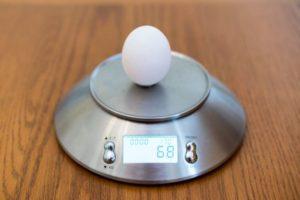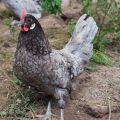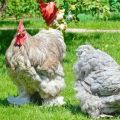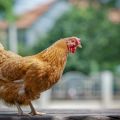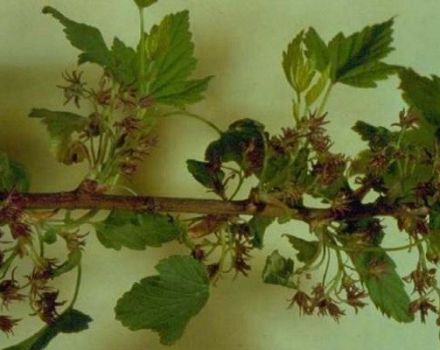When chickens begin to lay at home and the duration of egg production
Chicken eggs are an irreplaceable food product. They contain proteins, fats, minerals, vitamins, enzymes, and a small amount of carbohydrates. The medical rate of consumption of eggs per person per year is 260 eggs. Prices for store eggs are constantly growing, and many summer residents would like to equip chicken coops on their plots, but do not know when the chickens begin to lay in order to acquire chickens of the right age and calculate feed requirements.
Content
When and on what the timing of the start of the egg production period depends
The onset of egg production in young hens at home is associated with internal and external factors. The former include the genetic characteristics of the bird's organism associated with breed and heredity. External factors:
- conditions of detention;
- feeding rations;
- the season in which the hens were born.
At the optimum temperature of the content - from 16 to 25 degrees, the humidity in the hen house is not higher than 70 percent and the illumination of at least 13 hours a day, egg production occurs when the body weight reaches about 75 percent of the weight of an adult.
Low air temperature, illumination, insufficient physical activity of the bird and an unbalanced diet delay the onset of maturity of chickens. In this regard, chickens born in March enter the egg-laying period 1-2 weeks earlier than those born in late summer, autumn and winter. During the first weeks of egg production, eggs may be small, but as the bird increases in body weight, egg sizes increase to average values for the breed or cross.
Laying hens
Layers are hens of egg breeds. Their egg production occurs earlier than other breeds, at the age of 17 to 22 weeks. Too early onset of egg laying leads to the development of defects in the musculoskeletal system of chickens and a rapid depletion of the body. Chickens of egg breeds show the highest need for movement. When keeping them, a walk should be adjacent to the barn, protected by a net from predators. Annual egg production is 240-340 eggs.
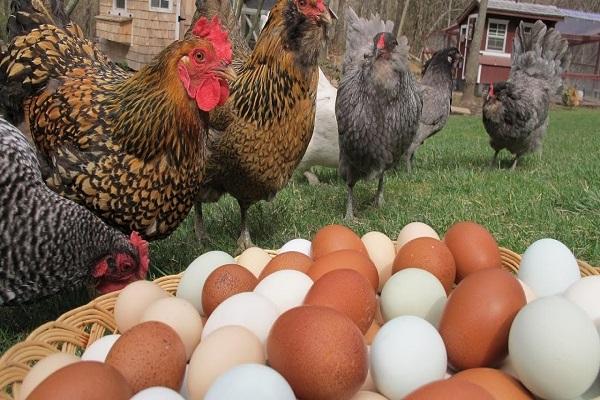
Meat and egg breeds
These breeds of domestic chickens begin to lay eggs later than the egg breeds, at about 24-28 weeks. They can produce 170-200 eggs per year. An ideal option for summer keeping in the country is to receive egg products during the summer, and to prepare excellent chicken carcasses for the winter, putting them in the freezer for storage.
Meat breeds
Egg production of meat chickens begins at about the age of 30 weeks. The total annual productivity is at the level of 120-170 pieces. The eggs of such birds are the largest, weighing more than 60 grams.Individuals are actively gaining weight and therefore quickly move to molt, during which egg production stops.
To find out what age chickens should be bought on the market, you need to subtract 3-4 weeks from the approximate entry time of the selected breed of chickens during the egg-laying period, which should go to acclimatize the birds in new conditions.
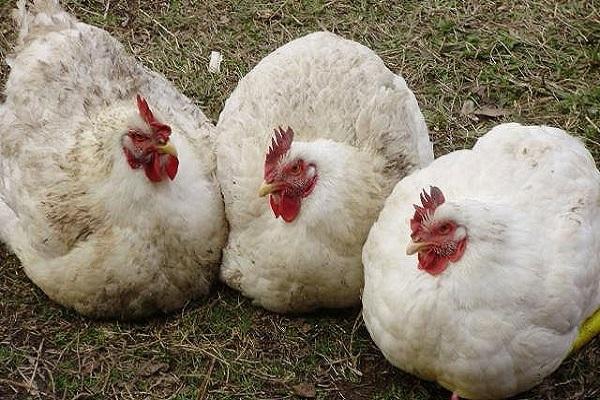
How long do chickens fly?
The physiological duration of the egg-laying period in chickens is 12-15 years. In the body of each chicken, about 2-4 thousand eggs are laid. However, keeping laying hens for so long becomes economically impractical, since their productivity in 1-1.5 years is annually reduced by 15-20 percent. Meat of chickens of all breeds over 3-4 years old acquires a coarse-fiber structure.
At home, laying hens are kept for 1-2 years, meat and egg chickens for 3-4 years, then they are replaced with young ones. There are times when some chicken is very fond of the owners, then the bird becomes a real pet.
In summer cottages, it is easier to keep chickens during one warm season without arranging a heated barn.
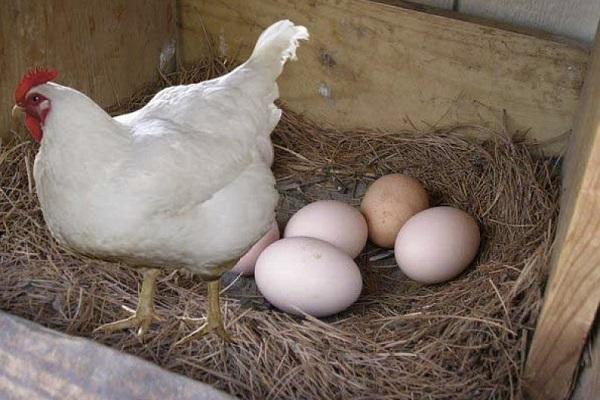
Possible reasons for the termination of egg production
In addition to the natural drop in production and the moulting period, birds may stop laying eggs due to stress. Young chickens are highly sensitive to the following types of stress:
- temperature jumps;
- change of diet;
- lack of lighting;
- the appearance of rats or predators.
Consider the recommended percentage of balanced feed formulations for egg breeds.
From 9 to 21 weeks of age:
- crushed wheat - 48;
- crushed barley - 30;
- sunflower meal - 2;
- feed yeast - 3;
- wheat bran - 5;
- herbal flour - 6;
- meat and bone meal - 2;
- bone meal - 1.4;
- chalk - 1.2%;
- table salt - 0.4.
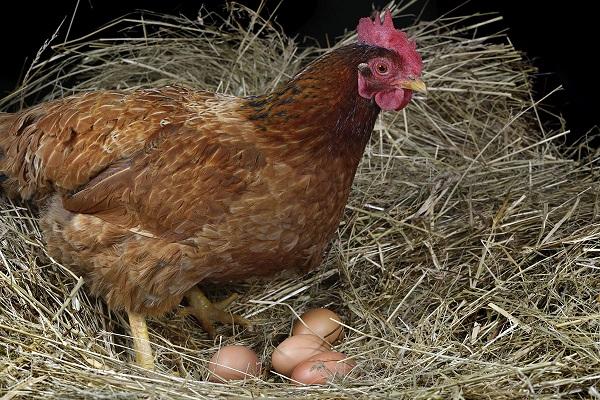
Between 22 and 47 weeks of age:
- crushed corn - 35.3;
- crushed wheat - 30;
- sunflower meal - 13;
- feed yeast - 3;
- fish meal - 5;
- herbal flour - 4;
- bone meal - 0.6;
- chalk - 3;
- shells, limestone - 4.7;
- table salt - 0.4.
At 48 weeks of age and older:
- crushed corn - 40;
- crushed wheat - 20;
- crushed barley - 7.5;
- sunflower meal - 11.7;
- feed yeast - 3;
- herbal flour - 4;
- fish meal - 4;
- bone meal - 0.8;
- chalk - 3;
- limestone - 4.6;
- table salt - 0.4.
In addition to grain feed, poultry mixes are prepared based on potatoes, milk, cottage cheese, to which ingredients in the form of flour and table salt are added. The daily diet should contain vitamin and mineral premixes and a sufficient amount of water.
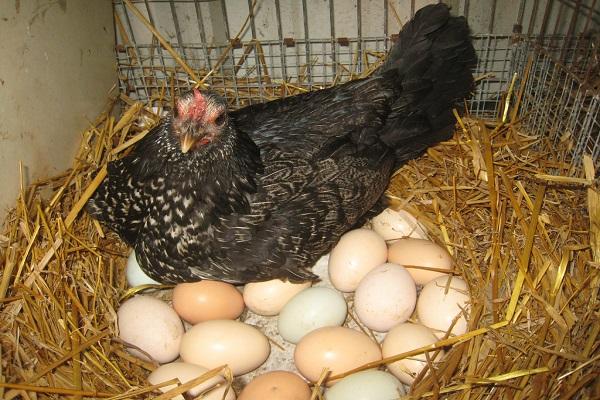
In addition to stress, chicken diseases can be the reason for the lack of egg production. Signs of illness in poultry:
- lethargy, drowsiness, decreased mobility, lowered wings, refusal of food and water;
- pale crest;
- the bird wheezes and coughs;
- yellow-green diarrhea or mixed with blood;
- loss of body weight;
- the bird constantly scratches itself with its beak;
- loss of feathers without molting, feathers full of holes.
Important! If you notice any of the above signs of poultry disease, seek immediate veterinary help!
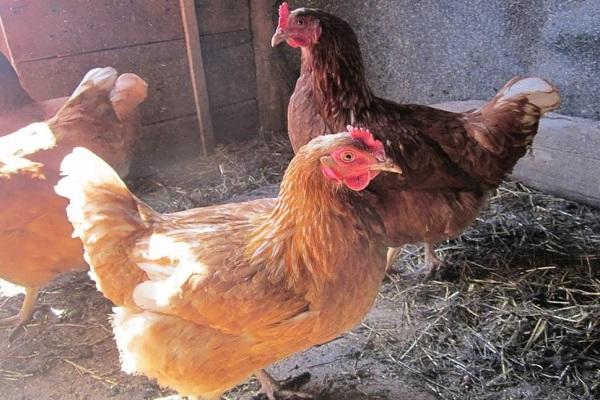
The most egg-producing bird species
Crosses are generally more productive than breeds. According to the annual number of eggs laid, pullets of brown egg hens prevail:
- Novogenbrown - 351 pieces with an average weight of 61.5 grams;
- Hisex - 346 - 61.7;
- Lohman - 339 - 62.5;
- Isa Brown - 342 - 61.6;
- High line - 337 - 61.9;
- Super Nick - 330 - 62.3;
- Tetra - 330 - 62.1;
- Bowance - 327 - 62.7.
Chickens with white color are inferior to the above crosses:
- Leghorn - 200-240 pieces per year with an egg weight of 56-62 grams;
- Zarya-17 - 256-268 - 60-62;
- Start - 248-282 - 58.8;
- Belarus 9 - 246-260 - 58-60;
- Russian White - 175-190 - 57-60;
- Orlovskaya - 150-160 - 55-58.
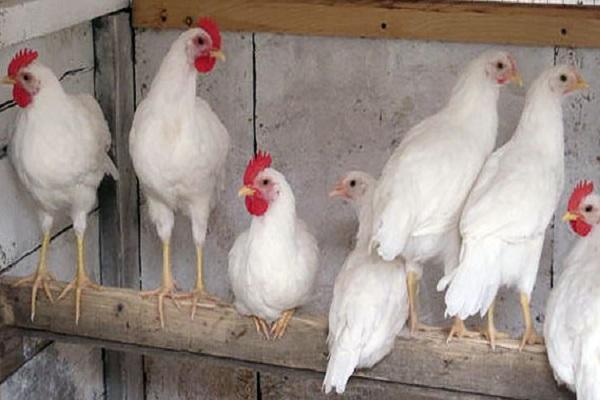
Productivity of meat and egg chickens:
- Rhode Island - 170-180 eggs per year with an average egg weight of 56-58 grams;
- New Hampshire - 170-190 - 58-59;
- Plymouth Rock - 180-200 - 56-50;
- Moscow - 210-220 - 56-58;
- Australorp - 160-180 - 60-62;
- Orpington - 160-180 - 60-61;
- Sussex - 160-170 - 56-58;
- Pervomaiskaya - 150-180 - 58-63;
- Livenskaya - 150-180 - 55-60;
- Yurlovskaya - 100-150 - 65-70.
The influence of the rooster on the process
Eggs are female reproductive cells of birds, regardless of fertilization, they mature in the bird's body and from the ovaries through the oviducts begin to move in the form of a yolk. The average maturation time of one egg is 25 hours. The yolk gradually grows overgrown with a protein membrane, a film and a shell, and in this form comes out.
The oviducts of the bird communicate with the cloaca - the place where the cock's seed gets, if the mating process took place. In this case, the egg will come out fertilized. However, mating is not necessary to obtain eggs.
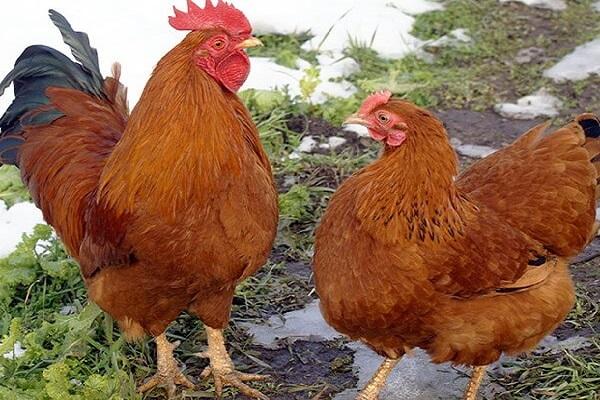
Note! To prevent salmonellosis infection, before the heat treatment of eggs, the hard shell must be washed in running water at a temperature of 45 degrees!
Since the chicken herd is a kind of bird community, when keeping chickens, the main role of the rooster is to maintain discipline by all hens. One rooster is enough for 10-12 layers. If there are several roosters, and they are of different ages, then competition arises between them for territory and fights are possible.
We hope that you have received an exhaustive answer to the question of when chickens of various breeds and crosses begin to lay in order to acquire young growth of the right age for their subsidiary or summer cottage farm. Provided proper care and sanitary and hygienic conditions in the hen house are maintained, egg production of birds will occur in due time.

